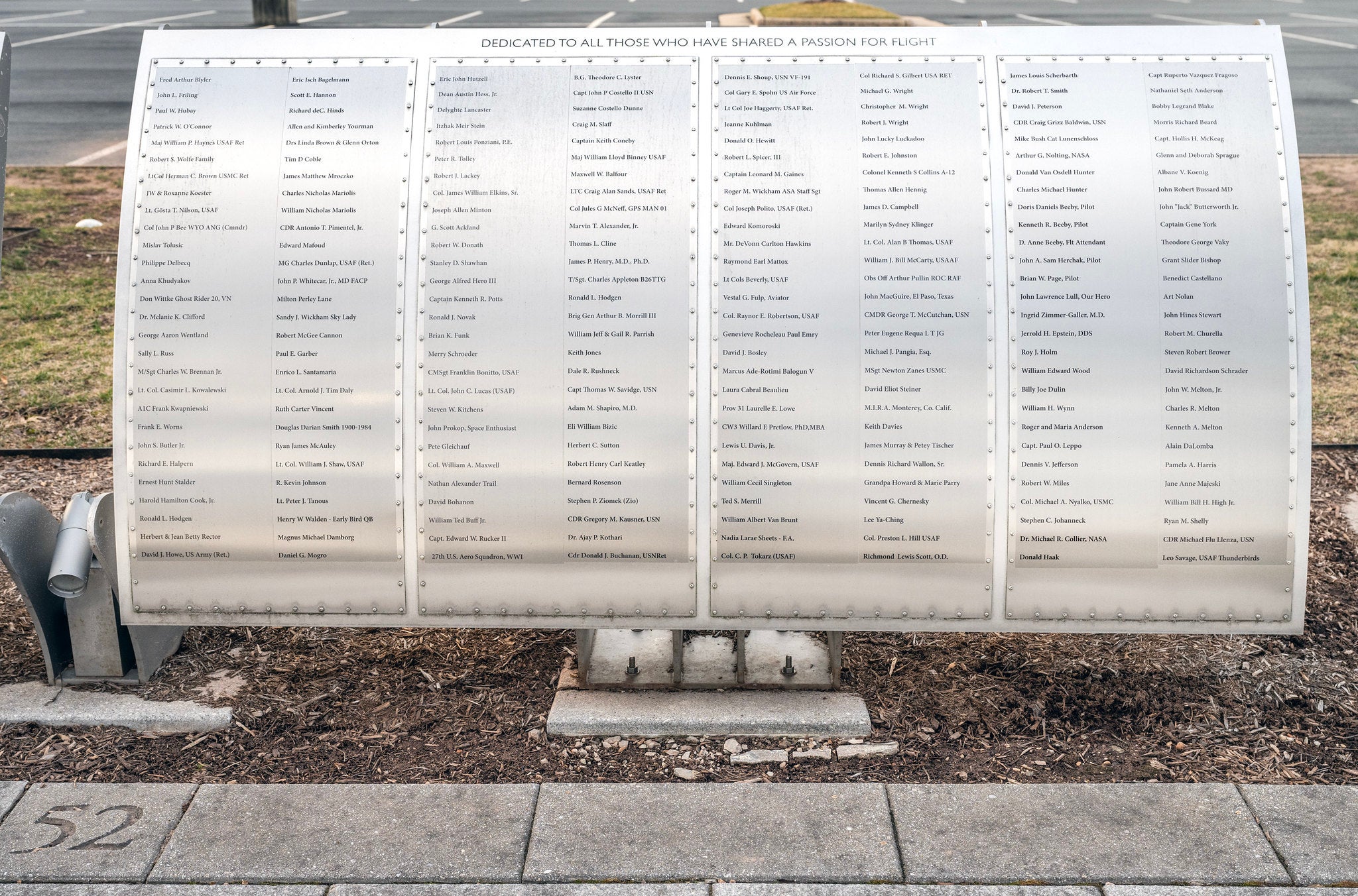Foil: 52 Panel: 2 Column: 1 Line: 13
Wall of Honor Level: Air and Space Sponsor
Honored by:
Danella Halle
George Alfred Hero III (1928- ) may be the last living person to have worked on Project Hermes with Ernst Stuhlinger in the V-2 missile guidance laboratory. In 2016, he wrote the following about his experiences for the Hero Family Reunion commemorative booklet.
After graduating from Tulane University in 1945, I went to work with General Electric (GE). After taking a year of their Advanced Engineering Course in Erie, Pennsylvania, I was selected to go to Fort Bliss, Texas under a support contract with the U.S. Army to work with the German V-2 engineers.
At the end of World War II, the Americans got to Peenemunde, Germany and their V-2 Factory before the Russian army. The German V-2 rocket was the first liquid fueled long-range missile that exceeded the speed of sound. The German engineers did not want the missiles to go to Russia and our Army wasted no time to keep their expertise for this country. The lower-level German personnel did finally end up in Russia but Wernher von Braun and the department heads ended up at Fort Bliss. Along with these men some 20 almost complete V-2's were captured. After the war, the Army and Navy both established missile design programs. They did not really trust the Germans, so they kept them isolated. They were allowed to modify one V-2 a year and fire it for research purposes. GE obtained a contract to provide one of their engineers in each of the German design teams for support in purchasing and language problems. As an added advantage to GE whatever we learned would be of help to their missile program in Schenectady, New York.
In 1950, Fort Bliss worked on Project Hermes. In that period there were no large supersonic wind tunnels that could evaluate lifting bodies and wings going faster than sound. The project was to add stubby wings to a V-2 and send it into horizontal flight and measure the angle of attack needed to hold a constant altitude. Two wind vanes were mounted onto the nose of the V-2 connected to a potentiometer monitored by the telemetry data link. I was working with Ernst Stuhlinger in the guidance laboratory. We were directly involved with Otto August Hoberg, Maunteffel, and Von Braun. In 1951, the whole operation moved to Huntsville, Alabama. The Redstone Arsenal had lots of spare room after the war. Our group moved into the old Hospital building. This was all before there was a NASA.
Everything was analog using vacuum tubes. Digital was not in the vocabulary yet. One project I worked on involved upgrading the 500 cycle German alternator controls so that the frequency could be used for timing. We designed a discriminator circuit running a saturable reactor that controlled the field winding. To test the accuracy, they found a piano tuner's device that had a tuning fork that ran rotating disks for each note. A microphone and amplifier lit a neon bulb in a window at each disk. If a tone was on key, the display was steady. The device was temperature compensated and was our standard.
The rocket motor carbon steering vanes were controlled by a magnetic clutch with iron filings that stuck together when a winding was energized, turning the vanes. The controller connected to the gyros was a printed circuit board with miniature vacuum tubes from artillery proximity fuses. In the lab the gyros were mounted in a salvaged B-17 ball turret that was connected to an analog computer. The computer had been captured along with the missiles. It used wound resistor cards that were tapered to conform to the changing missile parameters with time of flight. The control stability was tested with this rig.
One of the German vacuum tubes burned out. There was no standard U.S. substitute. The Germans had technical lab that could remove the envelope from a tube, replace the filament and evacuated it. They also could build to specifications any transformer needed. We had to specify the core stack from their supply, specify winding wire gauge, number of turns and number of laminations. Two days later we had a transformer. Damn clever, these Germans.
Working with the group was the most stimulating part of my career. Every project tested our knowledge of the basics of engineering. The field was new, and the Germans had the experience. Only after the Army and Navy missile tests all ended in flames and Russia put up Sputnik, were the German group allowed to become the world leaders in missile design for the second time. President John Kennedy let them reach for the moon for the United States.
George Alfred Hero III lives in Belle Chasse, Louisiana. He retired with the rank of Captain from the U.S. Navy reserves in 1976. After working with GE, he went into business with his father and uncle and then worked for many years as a Forensic Engineer in New Orleans. His creativity has not dulled one bit with his age, and he still has many inventions and projects with which he continues to tinker. "Learn as much as you can. Nowadays, if you don’t learn about technology, you're in trouble." George Hero III
Wall of Honor profiles are provided by the honoree or the donor who added their name to the Wall of Honor. The Museum cannot validate all facts contained in the profiles.
Foil: 52
